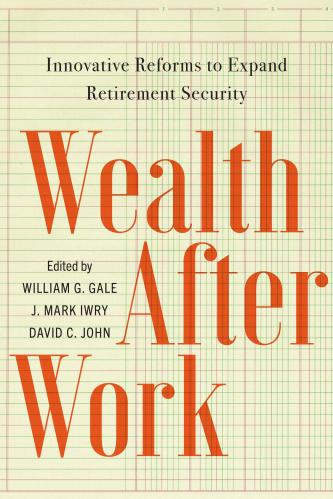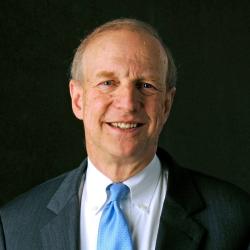You don’t have to be a mechanic to drive a car, and you shouldn’t have to be a financial expert to prepare for a secure and adequate retirement.
In a nutshell, that’s the theme of a new book we edited and contributed to, Wealth after work: Innovative reforms to enhance retirement security.
We propose a variety of ways to make the current retirement system work better for the majority of American workers. A better-working retirement system should provide broader and more equitable access to and participation in tax-preferred retirement programs. It would help people understand and make better decisions about their benefits and the intricacies of withdrawing funds or arranging for retirement income in an optimal manner.
Achieving these goals has become especially challenging in a world where traditional pensions are being replaced by “do-it-yourself” retirement saving arrangements, such as 401(k)s and individual retirement accounts (IRAs), that largely shift financial risks from employers to individuals.
Although the retirement system works well for many, tens of millions of workers lack adequate retirement savings—if they have any. Those who are saving may find it difficult to obtain unbiased financial information, especially useful guidance on how best to draw down their savings in retirement.
These problems are exacerbated by several broader issues: the racial wealth gap has risen over time, and minority households are less likely than whites to have retirement benefits. Women face retirement penalties because of lower earnings and the employment losses due to child-rearing and parental care that they provide in earlier years. Younger generations are growing poorer relative to older ones. And in a voluntary, employer-based retirement system, small employers often do not sponsor retirement plans, and their employees—like contingent workers and lower-income workers generally—are thereby disadvantaged.
Solving these problems requires broader changes than just retirement policy—including fixing structural racism and adjusting societal norms about household tasks and caregiving. At the same time, though, it is important to reform our retirement system to help bring about more positive outcomes. Our goal is to promote sound, concrete, and evidence-based ideas that improve retirement saving and security. We focus on changes that could be accomplished within the broad parameters of the existing retirement system, with emphasis on three sets of solutions.
The first is expanding access to and participation in retirement plans, including automatic enrollment and automatic contribution increases—both in employer-sponsored plans for employees who are eligible and in IRAs for workers who are not. For example, an auto IRA would require employers that do not sponsor a plan to auto enroll employees in a retirement saving account. A growing number of states have been, in effect, piloting auto IRAs and providing proof of concept—evidence that can help other states, and perhaps someday Congress, develop similar programs.
A second set of solutions would make it easier for individuals to navigate the system. These include better information and automatic features to help people invest wisely, preserve their savings, and manage multiple benefits (e.g., retirement dashboards).
Finally, we propose better options for generating reliable income and managing savings during retirement. Among our options are retirement income annuities in 401(k) plans, managed payout or systematic withdrawal funds, and tontine-type pooling of longevity risk.
Our book also contains reforms that would provide a “nest egg” to help people delay the start of their Social Security benefits—thereby increasing their monthly benefit—and address issues that arise in designing retirement plans for workers who move between contingent and regular jobs.
The American private retirement system has helped many working households increase their financial security in retirement, but substantial problems remain unaddressed. Our new book provides a guide to policymakers and others to research-based policy solutions and reforms to address many of these problems and to help Americans, especially moderate- and lower-income workers, better prepare for a financially secure retirement.
The Brookings Institution is committed to quality, independence, and impact.
We are supported by a diverse array of funders. In line with our values and policies, each Brookings publication represents the sole views of its author(s).








Commentary
How can the retirement system help more people afford retirement?
August 3, 2021